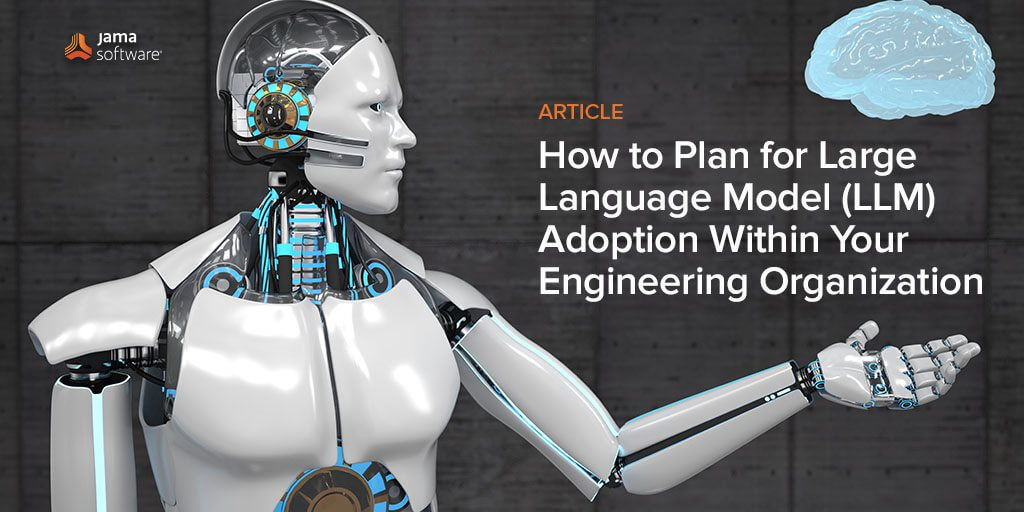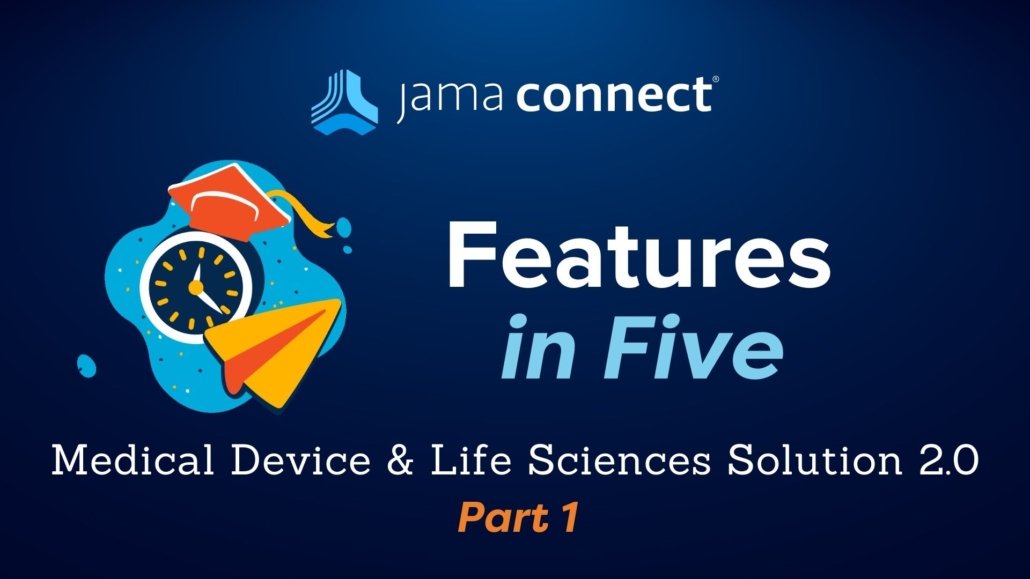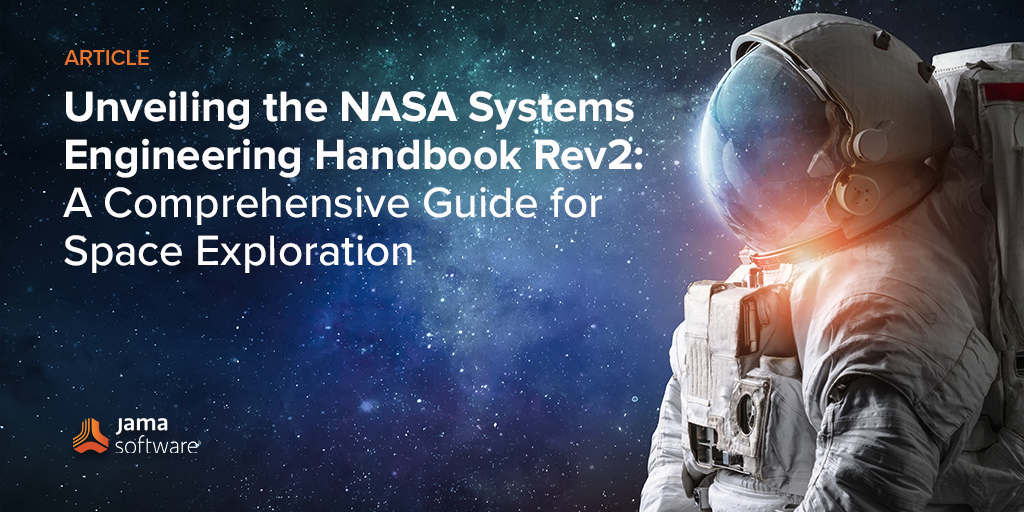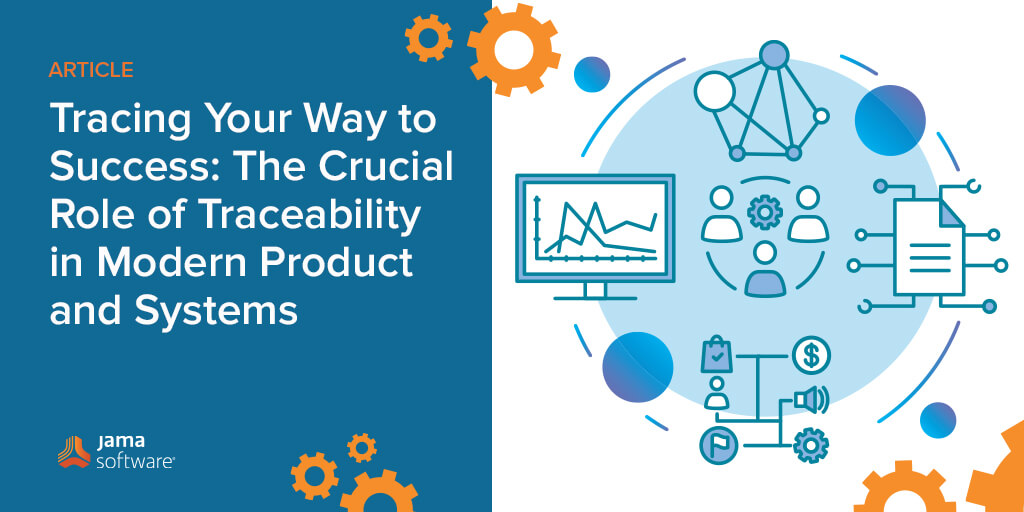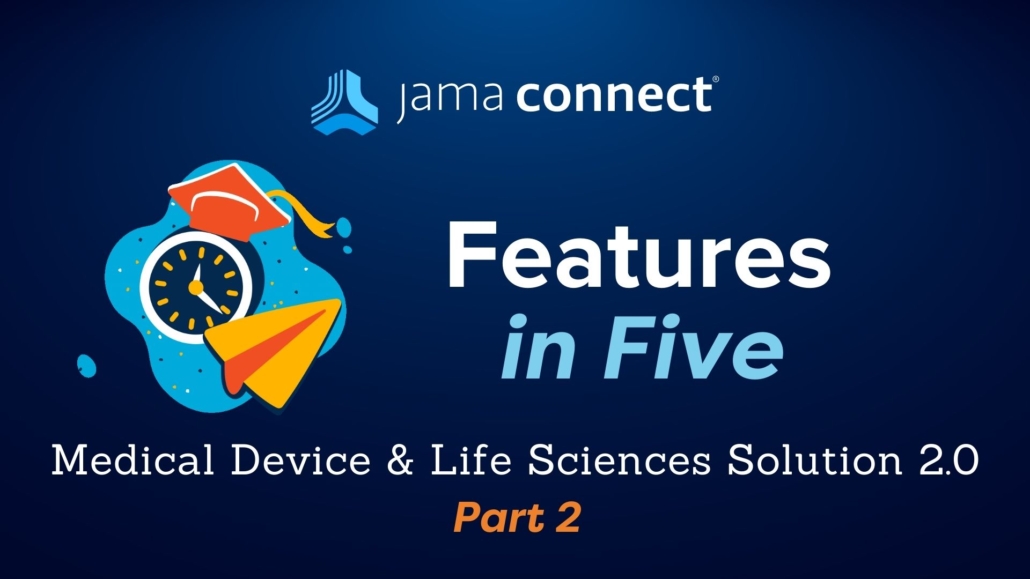
In part two of this two-part video series, will demonstrate the latest solution offerings for Medical Device & Life Sciences in Jama Connect®. Click HERE for part 1 and HERE to watch our related and full-length webinar, “Elevating Your Medical Device and Life Sciences Product Development Processes with Jama Connect.”
Jama Connect Features in Five: Medical Device & Life Sciences Solution 2.0 – Part 2
Learn how you can supercharge your systems development process! In this blog series, we’re pulling back the curtains to give you a look at a few of the powerful features in Jama Connect… in under five minutes.
In part two of this two-part Features in Five video series, Jama Software® subject matter expert Vincent Balgos, Director, Medical Device Solutions, continues his demonstration of the latest solution offerings for Medical Device & Life Sciences in Jama Connect.
Click HERE for part 1 and HERE to watch our related and full-length webinar, “Elevating Your Medical Device and Life Sciences Product Development Processes with Jama Connect.”
VIDEO TRANSCRIPT:
Vincent Balgos: Hi. My name is Vincent Balgos, and I’m the Director of Medical Solutions here at Jama Software. In this video, I’m going to talk about our updates to our Medical Device and Life Sciences Solution 2.0. For the agenda, there are quite a few improvements I’d like to share with you today.
So the first thing I want to show is our Jama Connect Advisor™ example data. Released in 8.80, this new feature enables EARS and INCOSE rules for requirement quality authoring. Additional licenses are required, but wanted to share some of the capabilities examples right out of the box. So as you can see here, what we’ve shown, is, you know, the general use case description, but also an example requirement with the Jama Connect Advisor output. Again, this is a nonfunctional screenshot. We just wanted to share some of the information that you may see when having Jama Connect Advisor. Here’s, for example, for a green status, which means generally a good requirement, but let’s take a look at what a yellow requirement or maybe something that may need some rework and you can see which of the rules, particularly INCOSE, that is now flagged that is, you know, has some potential issues. And then the same is true with our red level of requirements.
So again this is potentially a useful tool to kind of share while authoring requirements for your project.
RELATED: The Top 5 Challenges in Digital Health Solution Development
Balgos: The next use case that we’d like to talk about is the industry standards trace. So in the standards use case, the first thing I want to share is this relationship rule diagram. As you can see here, we have user needs trace to system requirements, which is, you know, aligns with [21 CFR] 820.30, but also we have this new item type called standards reviewed is now traced to system requirements.
If you upload your standards into Jama Connect, what we can see for this particular item type is that we’ve identified now the standard, the clause number, the clause text, and identified does the standard apply for this particular project. What’s nice about once this is in Jama Connect, I can now actually do a trace downstream to the system requirement. Note, this project does not provide any standards due copyright issues, customers won’t need to vision their own standards for use and apply appropriately. The last thing we want to talk about is really the reports on this medical device framework update.
RELATED: Jama Connect® for Digital Health Solution Overview
Balgos: What I wanted to share is if I go into the admin area and I take a look at the reports, you can see now that we’ve now had the ability to upload and, you know, manage our own reports, but we’ve provided some additional categories and information to help organize the many reports that we have. As you can see here, we’ve identified some trace reports and some new SaMD reports. So if I go back to the project and let’s take a look at, let’s say, system requirements, I want to show you a new trace report that shows requirements to verification-only events. So for example, let’s say if we go on to, let’s say, our subsystem requirements that we have here I’m gonna pick this one.
I’m going ahead and go at export. Again, this is available now into the Medical Device Framework 2.0. What I want to show you is requirements to verification trace report. So if I go ahead and hit run, create a report, I’m gonna download it, and then what wanna share is this new trace report that we have, which now shows you the requirement, the verification test case associated with the requirement, But in addition, the latest test run and its test result status.
RELATED: Requirements Traceability Diagnostic
Balgos: So this helps clearly identify the requirement to verification traceability that’s may needed and they may be able to submit to your DHS. We have a similar one called the user needs to validation transport that falls the same above. The other thing we wanted to show is that we’ve added a couple popular and useful GitHub reports to this solution update. These are located up in our run reports area where we actually now included the test results report group by test case and the test result report grouped by test cycles, which are really, really helpful for understanding test management scenarios.
Okay. That’s for the general update for the the standard medical device framework. We have an additional updated solutions such as software as a medical device, research use only, and our new self-guided onboarding framework. So we definitely encourage you to look at that further.
Please contact your Jama success manager or consultant to learn how to implement these new solutions at your organization.
Thank you.
To view more Jama Connect Features in Five topics, visit: Jama Connect Features in Five Video Series


